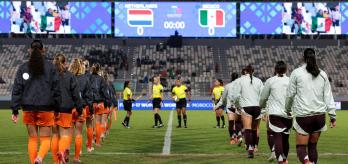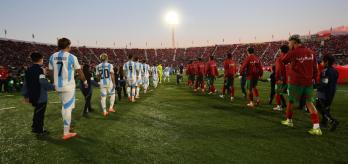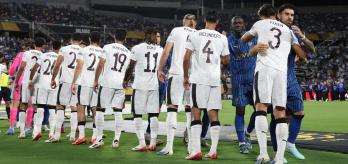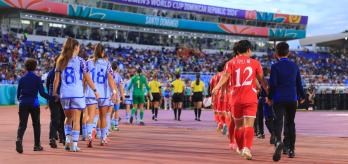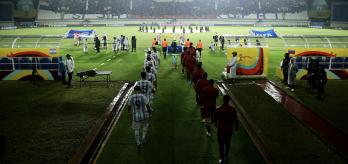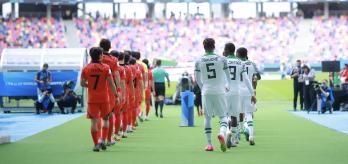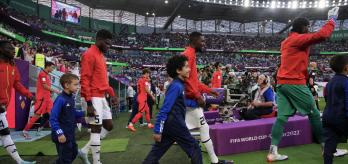Key take-aways
-
Brazil was the country of origin with the highest number of players at the tournament, with 141 players across 24 different clubs. Argentina was second with 102 players at 19 clubs.
-
Players aged under 22 years old represented the highest age category at the Club World Cup, with FC Salzburg having the highest percentage in their squad across all teams.
-
The relative age effect was strongly present, with 35.7% of players being born in the first quarter of the year (January, February, and March), compared to 16.7% in the final quarter (October, November, and December).
Introduction
With the creation of the Club World Cup 2025™, FIFA organised the largest global club event in its history. No fewer than 71 different nationalities were represented among the 32 clubs that participated in the United States.
Nationality is defined as the country for which footballers play at senior international level or, if the player does not have full international status, the country in which they grew up.
This article presents the national origins that were represented at the FIFA Club World Cup, the clubs at which the competition’s selected players were trained, as well as the age structure of the squads of all the participating clubs.
Origins
With 141 players, Brazil was the most represented origin at the FIFA Club World Cup. Brazilians could be found in 24 of the 32 teams that qualified for the competition. Their numbers were boosted by the presence of four Brazilian clubs in the competition, which is important to note for other participating teams. Argentinians (102 players in 19 clubs) and Spaniards (57 players in 15 clubs) completed the podium of the most represented origins. In terms of expatriates (playing for a foreign club), Argentina was ahead of Brazil and France. These three origins were also those with the highest number of expatriates worldwide, as shown in another study by the CIES Football Observatory.
In terms of the diversity of players’ origins, the highest number of nationalities in one club was recorded at Al Ain FC. Among the 33 players in the UAE club’s squad, 17 distinct foreign origins were represented. In half of the clubs, a double-digit number of origins was observed. Furthermore, all of the 32 participating teams had a squad composed of players from at least four nations.
In total, 42.3% of players that took part in the FIFA Club World Cup played for a club in a country from which they do not originate. The proportion of foreign footballers varied greatly from club to club, with a maximum of 81.5% for English side Manchester City FC and a minimum of 14.8% for New Zealand’s Auckland City FC. 13 out of the 32 participating teams were made up of a majority of foreign players, with the rates generally higher at European clubs.
Training club
The analysis of the FIFA Club World Cup players’ training clubs refers to the first teams that footballers played with for at least three seasons between the ages of 15 and 21 years. Argentina’s CA River Plate topped the list, with 21 players trained. Portugal’s SL Benfica and Brazil’s CR Flamengo rounded off the podium of clubs that trained the most FIFA Club World Cup 2025 players. Argentina’s CA Lanús headed the rankings for teams not taking part in the competition, with eight players trained at their club. A comprehensive CIES Football Observatory study on training clubs is available here.
The proportion of club-trained players was below 50% for all teams. Portuguese club SL Benfica had the highest figure (46.7%) ahead of CA River Plate (44.1%) and Atlético Madrid FC (41.2%). Eight clubs, including Manchester City FC and Chelsea FC, had less than 20% of club-trained players.
Age structure
There were also significant differences between clubs from the standpoint of the age of players in their squads. Regarding average age, almost six years separated the oldest team, Mexico’s CF Monterrey (28.34 years), from the youngest, Austria’s FC Salzburg (22.36 years). Additionally, eight of the 10 youngest clubs were European, while 18 of the 20 oldest were non-European.
In total, 27.0% of FIFA Club World Cup players were aged 21 or under, 25.6% were aged between 22 and 25, 23.9% were aged between 26 and 29, and 23.5% were aged 30 or over. The highest percentages in each age category were recorded by FC Salzburg for U-22 players (64.3%), Chelsea FC for players aged 22-25 (46.4%), Urawa Red Diamonds for those aged 26-29 (43.8%), and CA River Plate for players aged 30 or over (44.1%).
The analysis by month of birth allows for the testing of the Relative Age Effect (RAE). When the 12 months are divided into four birth quartiles, overall, the RAE is clearly confirmed across the sample, with 35.7% of players being born in the initial quarter of the year (i.e., January, February, and March), compared to 16.7% in the final quarter (i.e., October, November, and December). In a competition that brings together the world’s elite professional clubs, players born at the beginning of the year still had a competitive advantage. This emphasises the importance of the RAE in modern elite football.
Conclusion
The first edition of the FIFA Club World Cup marked a milestone in club football. The extended inclusion of teams from all continents offered a unique platform for talent from across the globe to compete against one another. While the majority of players at the national teams’ FIFA World Cup™ play for European clubs, the FIFA Club World Cup presented a more balanced picture, which is likely to contribute to the development of football worldwide.
With 42.3% of players competing outside their country of origin, and a remarkable presence from Brazil (141 players found in 24 of the 32 qualified teams), the competition highlighted the growing diversity and mobility within the sport. The proportion of club-trained players remained below 50% for all teams, with SL Benfica reaching the highest at 46.7%. The age distribution also illustrated a balance between youth and experience: 27.0% of players were 21 years old or younger, while 23.5% were 30 years older or more. This diversity allows the tournament to strengthen the competitiveness and appeal of clubs from all backgrounds, actively contributing to the growth of football worldwide. Despite no selection cut-off dates compared to youth competitions, there was clear evidence of a selection bias to relatively older players, which is likely a knock-on effect of the RAE that we see at youth level.
While Europe remains the centre of world football and its economy, the FIFA Club World Cup enabled the best clubs from other continents to enhance their attractiveness, both economically and in sporting terms. Thus, non-European participating teams can hope to increase their competitiveness over the long term, becoming more serious rivals for clubs from the old continent, who, thanks to their reputation and resources, have been used to attracting the best players for longer.







